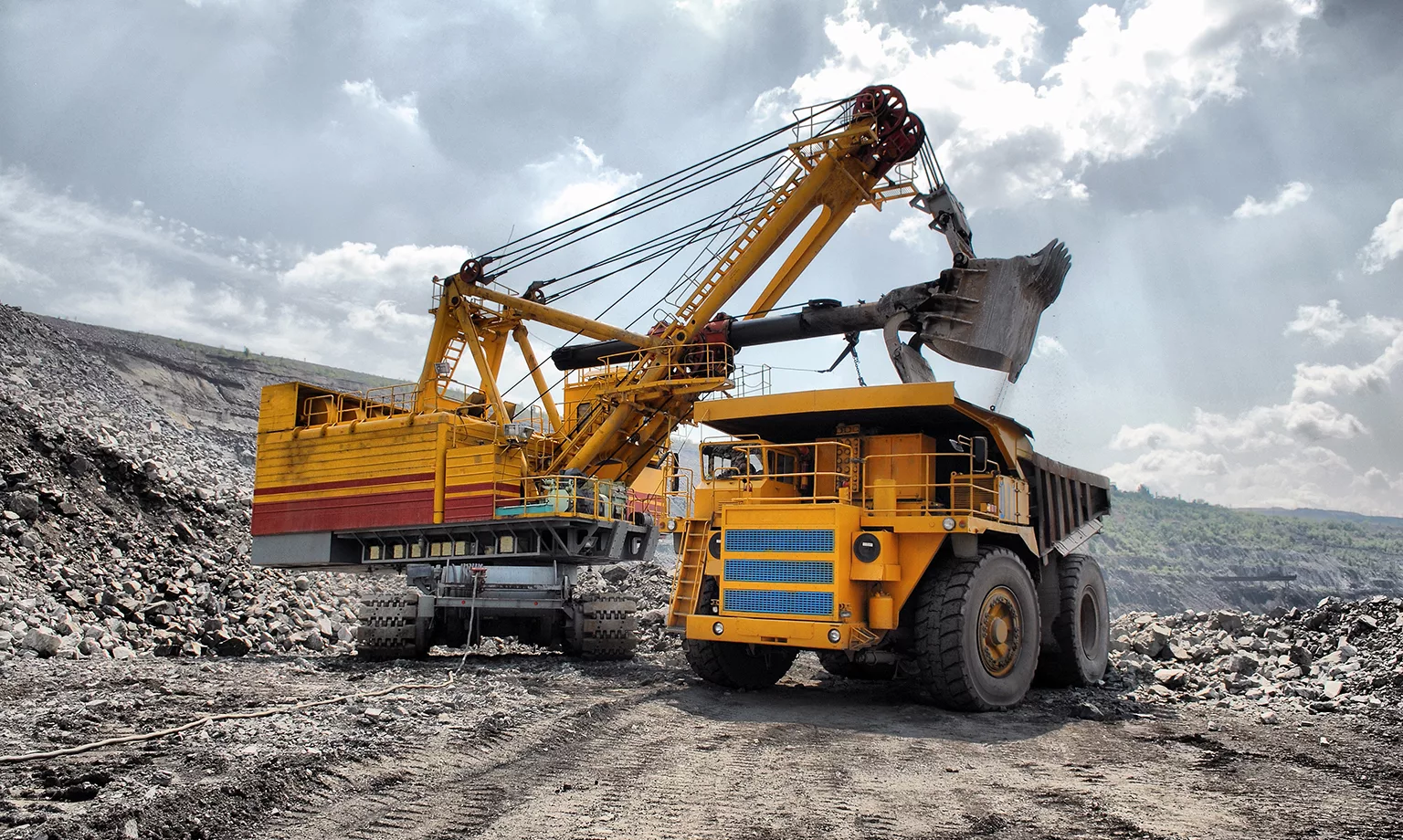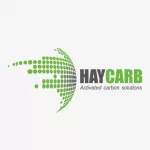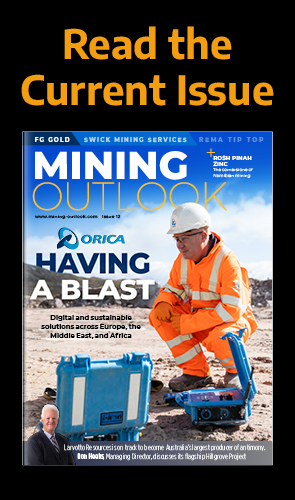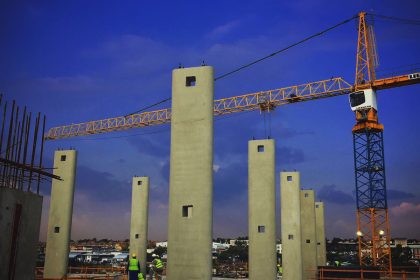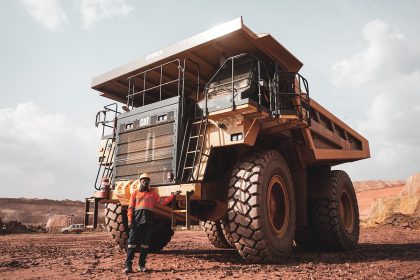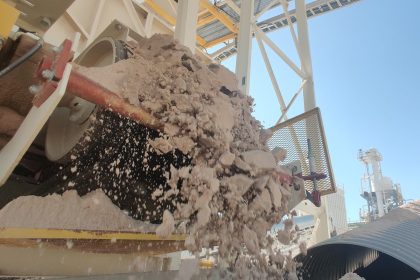Prospects for the Eastern Goldfields are bright thanks to significant renewable energy and digital transformation projects at Gold Fields Australia’s mining assets in the region.
GLISTENING PROSPECTS
The historic Eastern Goldfields region of Western Australia (WA) is one of the country’s most colourful mining areas.
Spanning 320,000 square kilometres, it includes the gold mining towns of Coolgardie and Kalgoorlie as well as four mines – St Ives, Agnew, Granny Smith, and Gruyere – operated by Gold Fields Australia (GFA).
The gold producer has been operating in Australia since 2001, where its presence began with the acquisition of the St Ives and Agnew operations and has since expanded exponentially.
More than 10.5 million ounces (oz) of gold has been produced by St Ives since the first major gold mining expedition commenced in the mid-1980s.
Today, over 350,000 oz of gold are produced annually by the mine, which is located near Lake Lefroy about 80 kilometres (km) south of Kalgoorlie and 630km east of Perth.
It is situated on the Norseman-Wiluna Belt, a highly mineralised granite-greenstone terrain with world-class gold and nickel deposits that forms part of the Yilgarn Craton, which constitutes a major part of WA’s land mass.
St Ives features both underground and surface mining but continues to transition to a predominantly underground operation, with the majority of production from the Invincible and Hamlet North underground complexes.
RENEWABLE PROJECT
An impressive high-grade deposit, Invincible is the most significant discovery in the history of St Ives and possibly the entire WA goldfields community.
Invincible earned its name due to the sheer size of the deposit, which is located 8km from the Lefroy Mill.
Lode thickness varies from less than one metre (m) in length to more than 20m in the thicker portions of the orebody and has been defined as nearly 2km in strike length.
This exciting discovery resulted in the start of open pit mining in January 2015, before the Invincible underground project commenced in November 2017.
With emphasis on the continued expansion of underground operations at Invincible, full production exceeding two million tonnes per annum (Mtpa) has now been established at the complex, which will form the foundation of the St Ives operation over the next eight years.
In March 2024, meanwhile, an AUD$296 million renewable energy project to be built at the St Ives mine was approved, with construction now underway.
The plant will be the largest in the global Gold Fields portfolio to date and the first to be built and managed by the group itself, rather than independent power producers.
Comprising wind and solar capacity of 42 megawatts (MW) and 35MW, respectively, the St Ives renewable project includes seven wind turbines and around 60,000 photovoltaic panels, as well as a 33 kilovolt (kV) renewable energy hub substation and a 132kV transmission line.
Once operational by the end of next year, it will provide 73 percent of the electricity required by St Ives and reduce the operation’s electricity costs to a third of previous GFA forecasts for 2025.
The project, which will additionally provide cheaper electricity and offer enhanced energy security, is therefore a clear and tangible signal of the decarbonisation commitments of GFA and the wider Gold Fields group.

MICROGRID SYSTEM
Along with St Ives, a renewable energy project also leads the way at Agnew, another of GFA’s underground operations situated almost 1,000km from Perth.
Agnew’s mining operations comprise the consolidated Waroonga and New Holland underground complex, which produces over 250,000 oz of gold per annum.
The Agnew Hybrid Renewable Microgrid (AHRM) is leading the mining sector’s transition to clean energy for off-grid mining operations and is the largest project of its kind in Australia.
The microgrid, which was commissioned in 2020, comprises gas, diesel, solar, and wind generation, as well as battery energy storage and advanced microgrid control systems. Notably, it is the first microgrid in the country to utilise wind generation on a large scale at a mine site.
More than half of Agnew’s electricity is now sourced from renewables generated by AHRM without compromising power quality or reliability, and more than 80 percent is generated by the microgrid’s five 110m tall wind turbines and solar farm, depending on the right conditions.
This innovative hybrid renewable energy system was delivered under a 10-year agreement with GFA by EDL, a leading global producer of sustainable distributed energy that owns a global portfolio of power stations in Australia as well as North America and Europe.
It was GFA’s clean energy vision that inspired EDL’s work to push the boundaries of existing technologies to develop this groundbreaking system.
AHRM continues to be recognised, as GFA and EDL took home the Excellence in Environmental Management accolade at the 2020 Australian Mining Prospect Awards, where it was hailed as a significant step forward in hybrid renewable energy engineering at scale.
AUD$13.5 million in funding was provided to the microgrid project by the Australian Renewable Energy Agency (ARENA) under its Advancing Renewables Programme.
According to ARENA, AHRM has demonstrated that a remote mining operation can be powered by high-penetration renewable energy, and that wind power is a mature and reliable technology for use at mines.
There is also a strong economic case for high-penetration renewable projects such as AHRM where wind and solar resources complement each other as they do at Agnew, with solar generation during the day and wind generation at night.
AHRM benefits all of GFA’s stakeholders now and in the future, clearly demonstrating the company’s commitment to sustainable and innovative solutions that reduce its carbon footprint whilst strengthening its security of supply and paving the way for the industry to implement renewable systems.
For GFA, it is also an outstanding example of the capacity of the hybrid renewable energy model to meet the dynamic power requirements of remote mining.
GRANNY SMITH OPERATION
There are also plans to expand GFA’s 8MW solar plant at the underground Granny Smith mine to 11MW.
Acquired by GFA in October 2013, Granny Smith has remained in continual operation since being commissioned in 1990 and has a 10+ year mine life as of 2022.
Around 1.6 Mtpa of gold-bearing ore is extracted from the Granny Smith underground operation, which is situated 740km northeast of Perth, and treated at the site’s processing plant.
Just over 10km from the Granny Smith pit, the Wallaby deposit was discovered in 1998, with the first open pit ore delivered in November 2001.
Underground mining at Wallaby commenced in December 2005 and remains ongoing, with annual production exceeding 250,000 oz per year and surveys indicating that it still has many years of productive life.
Wallaby is accessed via a portal established within the completed open pit and is trackless, with underground truck haulage via the pit ramp to the surface.
Two primary underground mining methods are used – inclined room and pillar (IRP) and transverse longhole stoping (TLS) – with minor adjustments to suit localised geometry.
For the GFA team members who travel to the Granny Smith site via a chartered jet from Perth Airport or by road from the host community towns of Laverton and Kalgoorlie, camp life includes village rooms consisting of fully contained ensuites and extensive phone coverage availability.
There are also well-equipped recreational facilities that staff can enjoy, including a swimming pool, gym, squash courts, two multi-use sports courts, golf practice driving nets, pool and table tennis tables, as well as a grassed gazebo area for special functions.
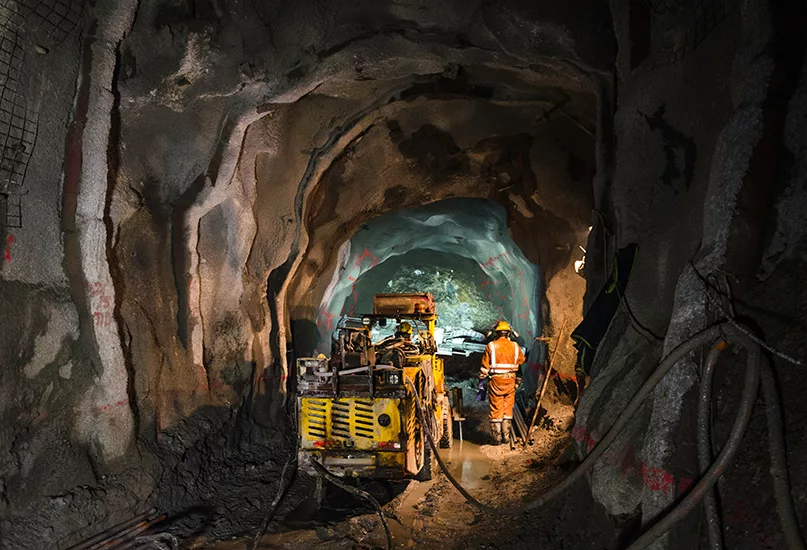
DIGITALISED ACTIVITIES
As a mine operator, GFA faces a broad range of planning and operational challenges in hard-to-predict environments.
Digitalising activities below the surface at the mature Granny Smith mining complex, for example, has typically been hampered by the difficulty of enabling wireless communications underground.
As such, GFA has invested in its own 4G network at Wallaby to Long Term Evolution (LTE) communication standard, enabling the transmission of large volumes of data underground and from deep in the mine to the surface.
To deliver a modern, digitalised mine, the ABB Ability™ operations management system (OMS) was also deployed by the company in December 2023 to coordinate production scheduling and execution across Granny Smith, which is now the flagship for digital transformation across the company’s mine portfolio.
The OMS is a contributing factor to the ongoing digital transformation of the underground Granny Smith operation, aiming to increase productivity and streamline data flow to enable timely decision-making.
Short-interval control and closed-loop scheduling are integrated into the same digital platform by the OMS, connecting mine planning and operations in real time, including design, maintenance, workforce, equipment, and services.
This enables operators to plan production scheduling, automate activities, and quickly react to disturbances that may hinder production.
Granny Smith’s workforce, as well as all fixed and mobile equipment at the mine, will be connected to achieve new levels of production scheduling efficiency, optimising resource usage and implementing the production plan more effectively.
Likewise, ‘what-if’ scenario analysis and re-planning will help inform decisions taken by GFA’s teams, maximising efficiency and financial opportunities for the operation.
The ABB Ability™ OMS therefore supports GFA with significant improvements to planning and productivity by moving individual responsibilities onto a digitalised system for faster decision-making and higher productivity.
As well as more efficient and profitable extraction of gold from a mine that has already been operating underground since 2005, the digitalisation of Granny Smith creates a cleaner environment by organising the movement of people and unnecessary equipment into a seamless workflow.
FLEET MANAGEMENT
The OMS implementation follows on from an AUD$1.1 million contract awarded by GFA to ABB in October 2022 to digitally optimise mining operations at Granny Smith by integrating a digital fleet management system (FMS).
ABB Ability™ underpins the implementation and integration of the FMS, which supports the latest Industry 4.0 interoperability standards.
Scheduling the vast number of independent mining activities is a difficult task as it has a significant impact on safety, energy consumption, and environmental performance, whilst the ability of mines to operate at maximum efficiency is also often limited by imperfect manual coordination.
Optimising personnel and the utilisation of assets is impossible without oversight of what is happening underground at any given time. Otherwise, it can take hours to replace equipment that has broken down or bring additional licensed operators from the surface to the drill site when there are delays on another procedure.
Applying the digital FMS lifts a lid on this opaque realm and achieves transparency at Granny Smith, where sensors are now applied to machinery to constantly monitor and transmit the whereabouts and operational state of crucial equipment and people.
Documents and work orders can also be received via computer tablets by employees, who can likewise report on the completion of tasks or schedule interruptions.
Equipped with such real-time data, ABB’s OMS and FMS maximise the utilisation of GFA’s equipment and orchestrate its workforce to progress more seamlessly from task to task, adapting to events as they happen.
This fully interoperable system will allow the company to manage Granny Smith operations in real time from a centralised control room once it is embedded in mine procedures.
GRUYERE JOINT VENTURE
Last but not least, Gruyere is one of Australia’s largest underdeveloped gold deposits, defined as 148 million tonnes grading 1.2 grams per tonne for 6.2 million oz of contained gold.
A Tier 1 low-cost and long-life asset, Gruyere was discovered in October 2013 by Gold Road Resources, who announced a 50:50 joint venture (JV) in the development and operation of the deposit with GFA in November 2016.
Since the first gold pour took place in June 2019, marking the commencement of production, the Gruyere JV has successfully yielded more than 1.2 million oz of gold up until the end of December 2023, with record annual gold production of 321,984 oz delivered last year alone.
The Gruyere JV is a 24-hour mining and processing operation, with current mine life extending to at least 2032. This includes the Golden Highway satellite pits, which are situated about 30km from the main Gruyere mine.
Through its St Ives, Agnew, Granny Smith, and Gruyere assets, GFA is realising its vision to be the preferred mining company delivering superior, sustainable value.



